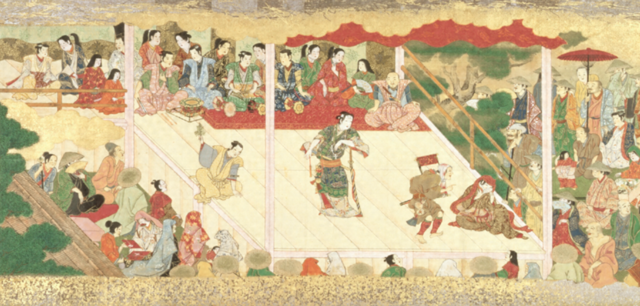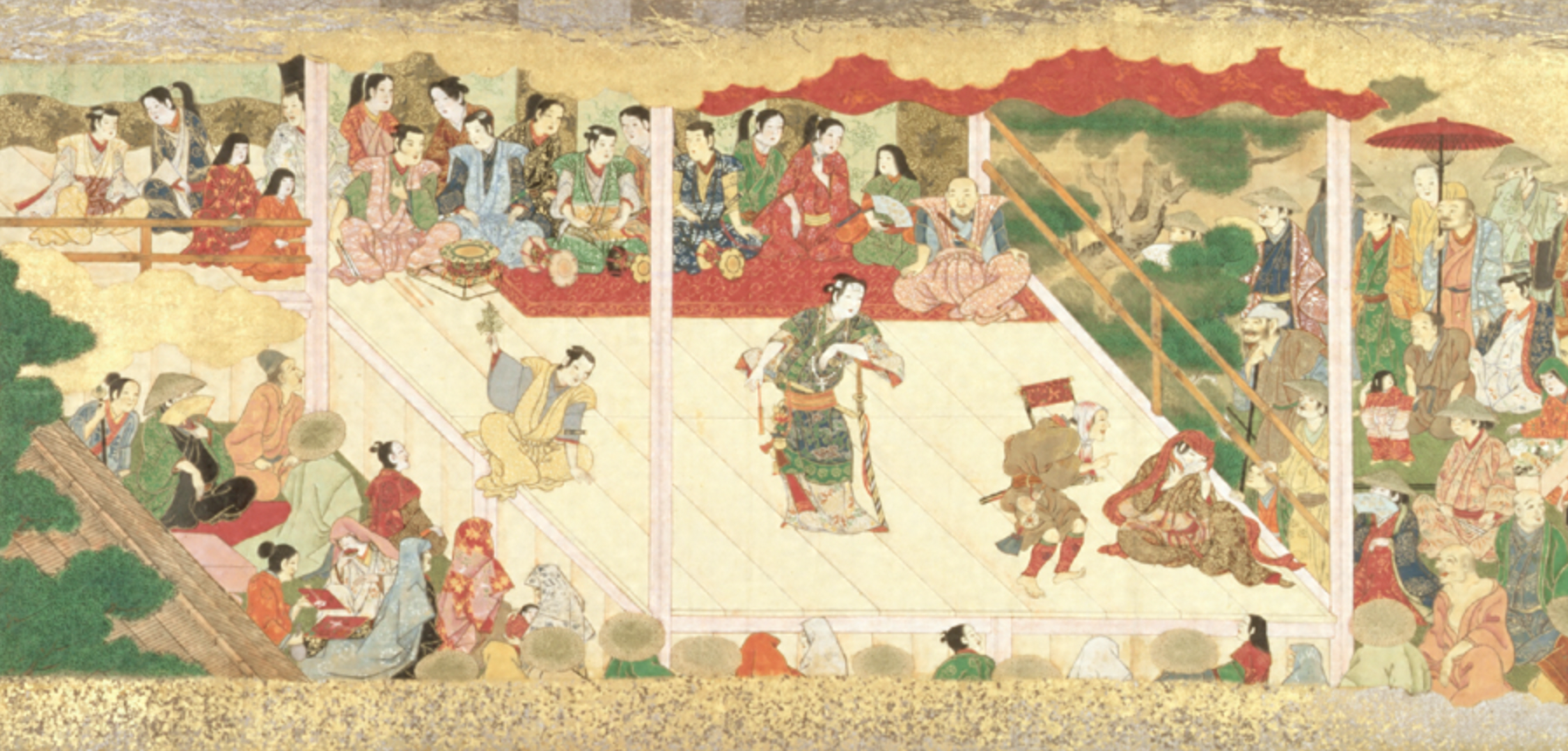"Stage of the Onna Kabuki" Painting from the Tokugawa collection, 17th century

Full description
Artist Unknown Dimensions - (Vertical 36.7 First volume length 836.1 Second volume length 699.4)
In one of the readings, we learned that women could either be wives or courtesans. But women had much more influence in Edo Japan despite the very patriarchal society at the time. For example, the founder of one of the most popular Japanese theaters, kabuki, was a woman. Her name was Okuni and she would dress in eccentric male clothes, dance in a rather sensual form, and make funny sketchy impressions of famous legends and figures, such as kabuki mono gang members. As such, in this picture, we can see Okuni dressed as a samurai on stage during the early years of the kabuki theater. We know that it is early years because the stage is placed on a riverbed where her first performances took place. This place is most likely why actors were called kawaramono (people of the riverbed) or even kawara kojiki (beggars of the riverbed). This is because most actors, including those in the Okuni’s troupe, were social outcasts such as prostitutes. Still, her performances in a riverbed in unladylike fashion mark the kabuki theater's beginning in Edo Japan.
-Daria Gileva
Comments
to view and add comments.
Annotations
No one has annotated a text with this resource yet.
- typeImage
- created on
- file formatpng
- file size3 MB


